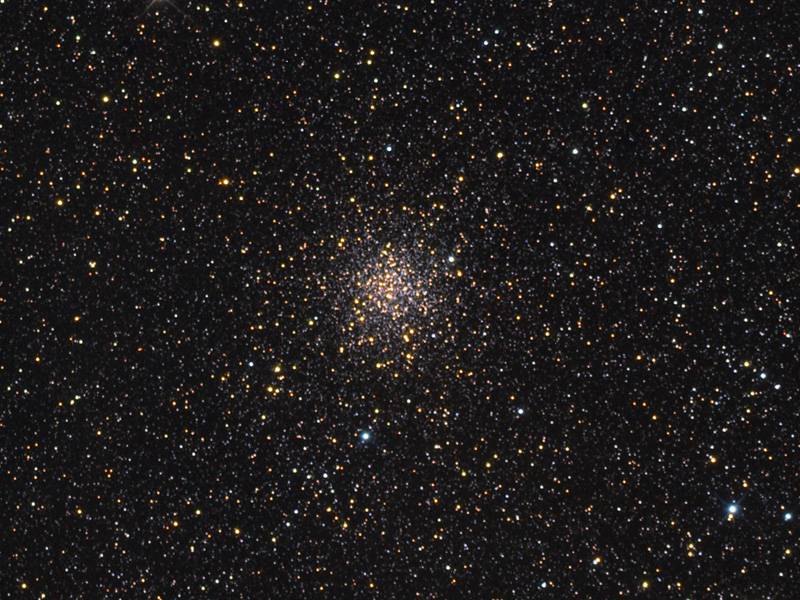

Globular Cluster M71

M71 is a globular cluster in the constellation Sagitta. It was discovered by Philippe Loys de Chéseaux in 1746 and included by Charles Messier in his catalog of comet-like objects in 1780. It was also noted by Koehler at Dresden around 1775.
M71 is at a distance of about 12,000 light years away from Earth and spans some 27 light years across. The irregular variable star Z Sagittae is a member of this cluster.
M71 was long thought (until the 1970s) to be a densely packed open cluster and was classified as such by leading astronomers in the field of star cluster research due to its lacking a dense central compression, and its stars having more "metals" than is usual for an ancient globular cluster; furthermore, it's lacking the RR Lyrae "cluster" variable stars that are common in most globulars. However, modern photometric photometry has detected a short "horizontal branch" in the H-R diagram of M71, which is characteristic of a globular cluster. The shortness of the branch explains the lacking of the RR Lyrae variables and is due to the globular's relatively young age of 9-10 billion years. The relative youth of this globular also explains the abundance of "metals" in its stars. Hence today, M71 is designated as a very loosely concentrated globular cluster, much like M68 in Hydra. M71 has a luminosity of around 13,200 suns.
Photo Details
 Telescope: Celestron C8N (1000mm)
Telescope: Celestron C8N (1000mm)
 Camera: Sbig ST-2000XM, Sbig Filter wheel, Baader 1.25" HLRGB filters
Camera: Sbig ST-2000XM, Sbig Filter wheel, Baader 1.25" HLRGB filters
 Mount: NJP Takahashi
Mount: NJP Takahashi
 Guiding: Self-guided
Guiding: Self-guided
 Exposure: LRGB 2.5h
Exposure: LRGB 2.5h
 When: July 2011 from City of Tarnów
When: July 2011 from City of Tarnów
 Other information: very good seeing, luminance taken with IDAS LP2 filter
Other information: very good seeing, luminance taken with IDAS LP2 filter